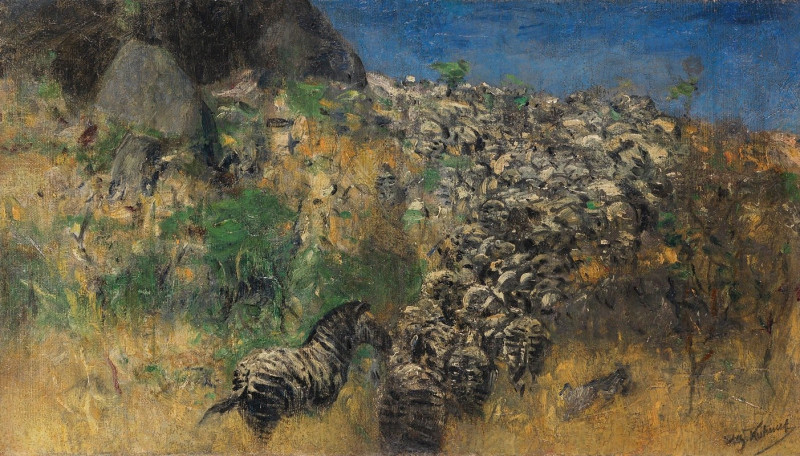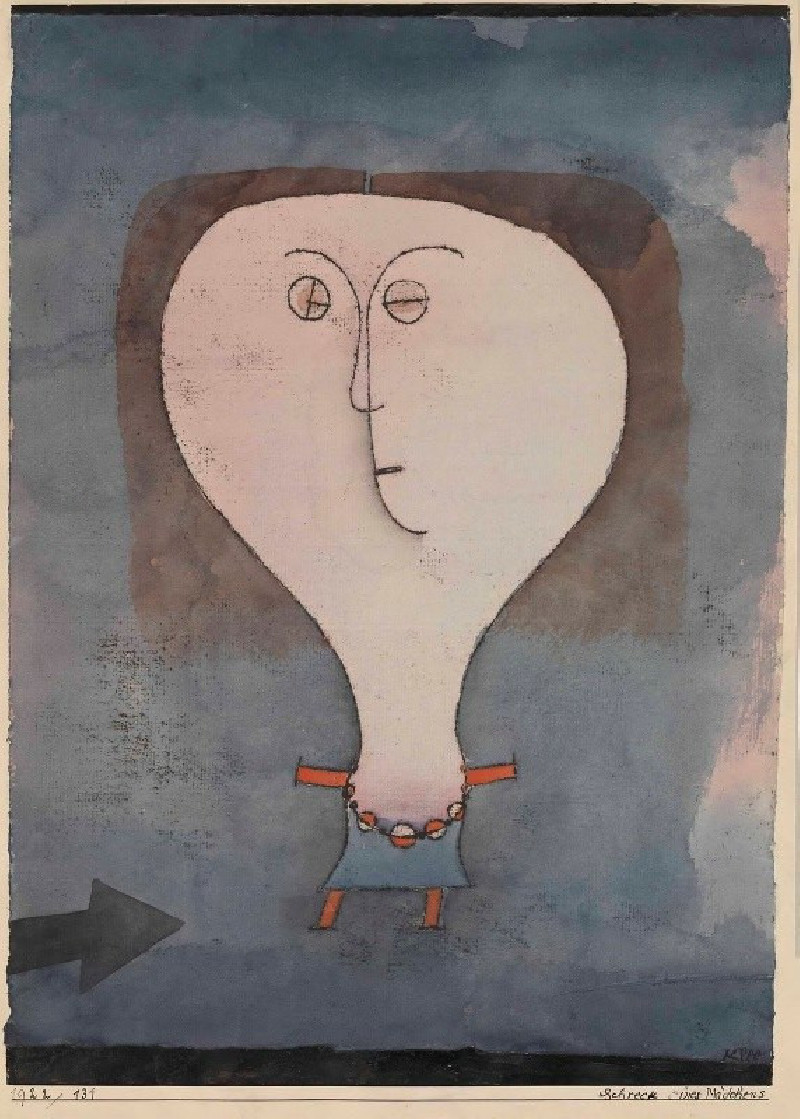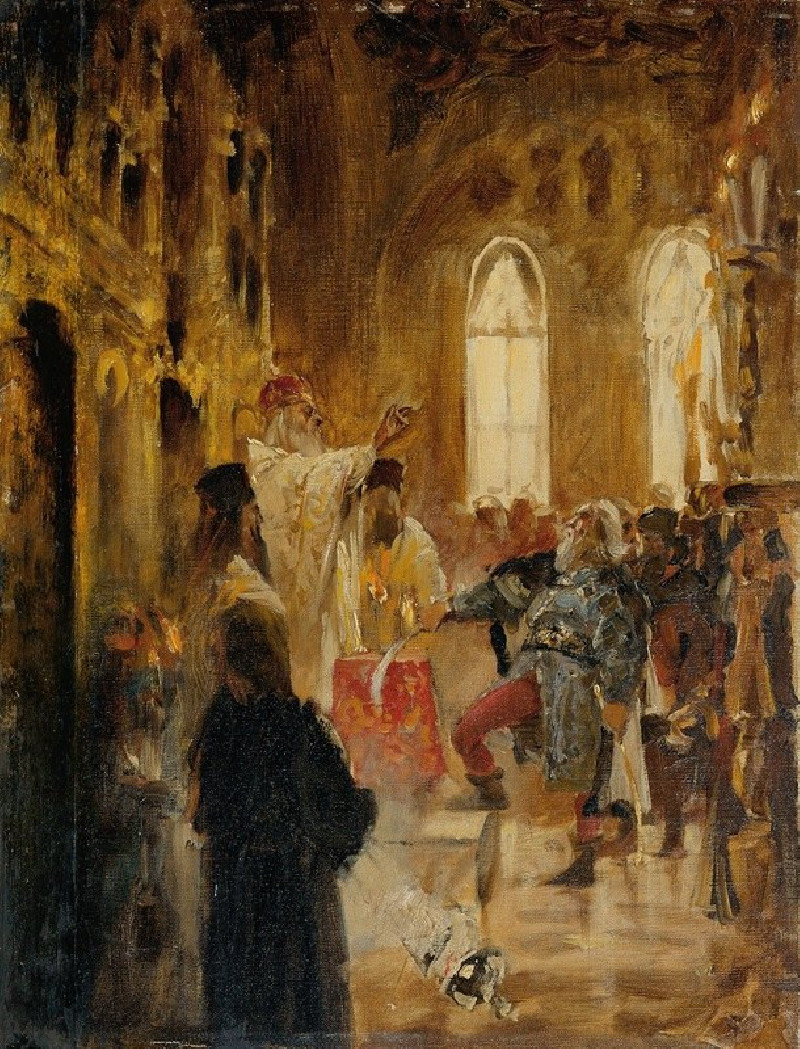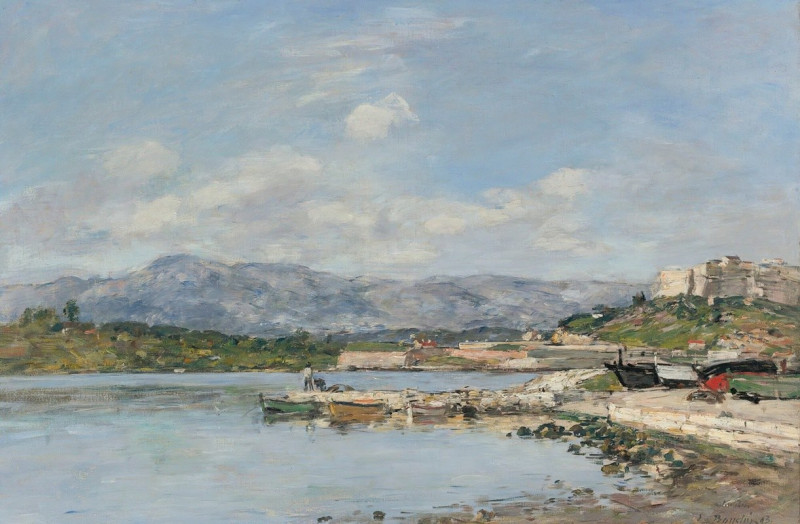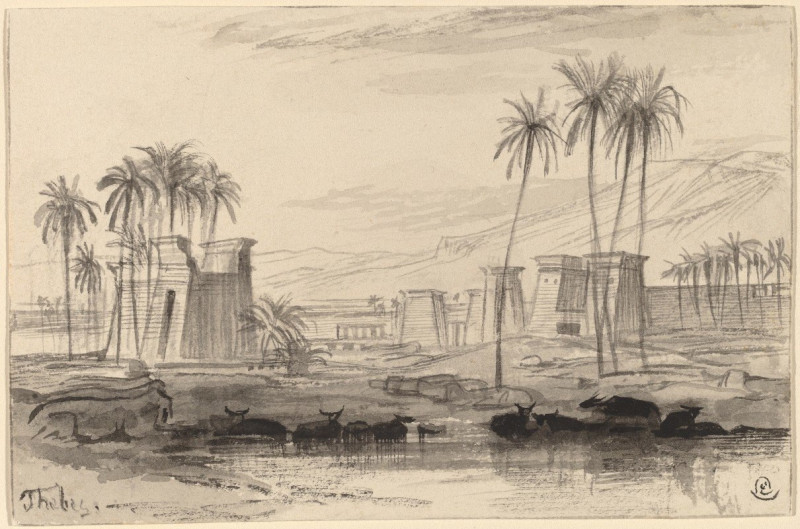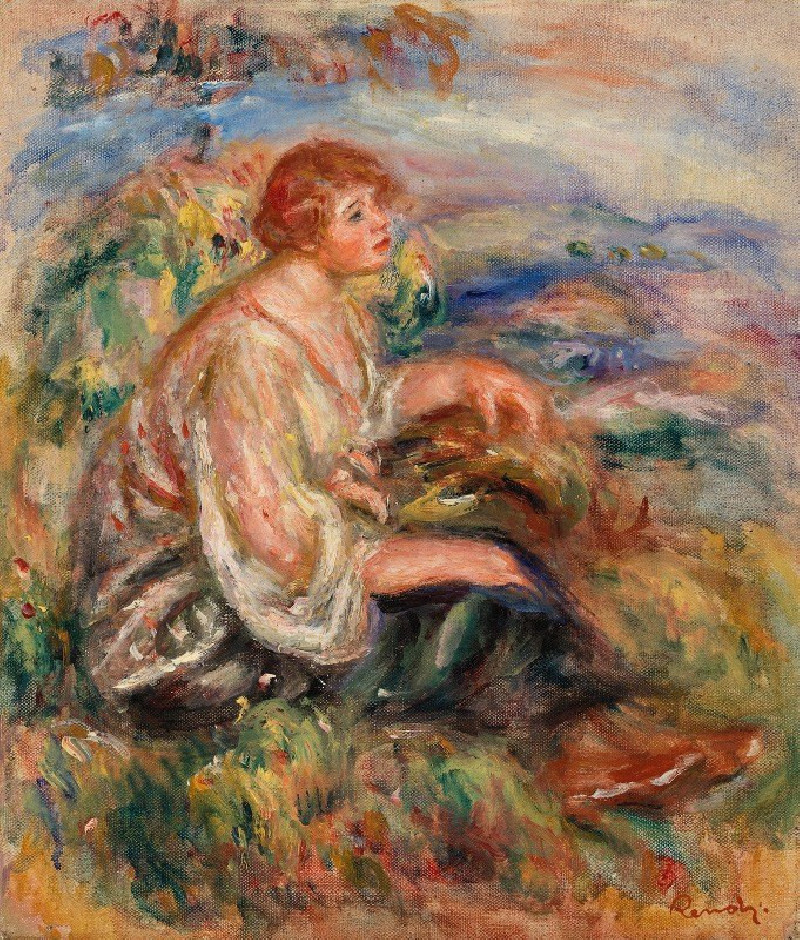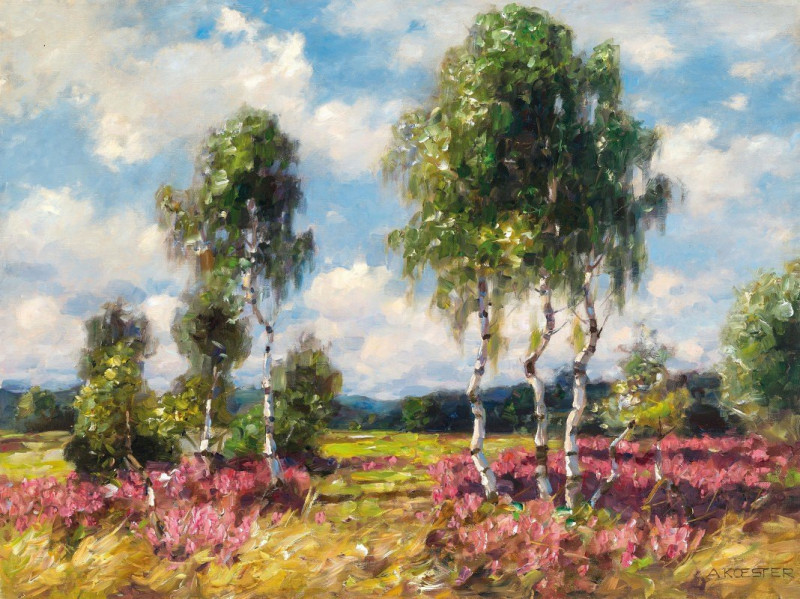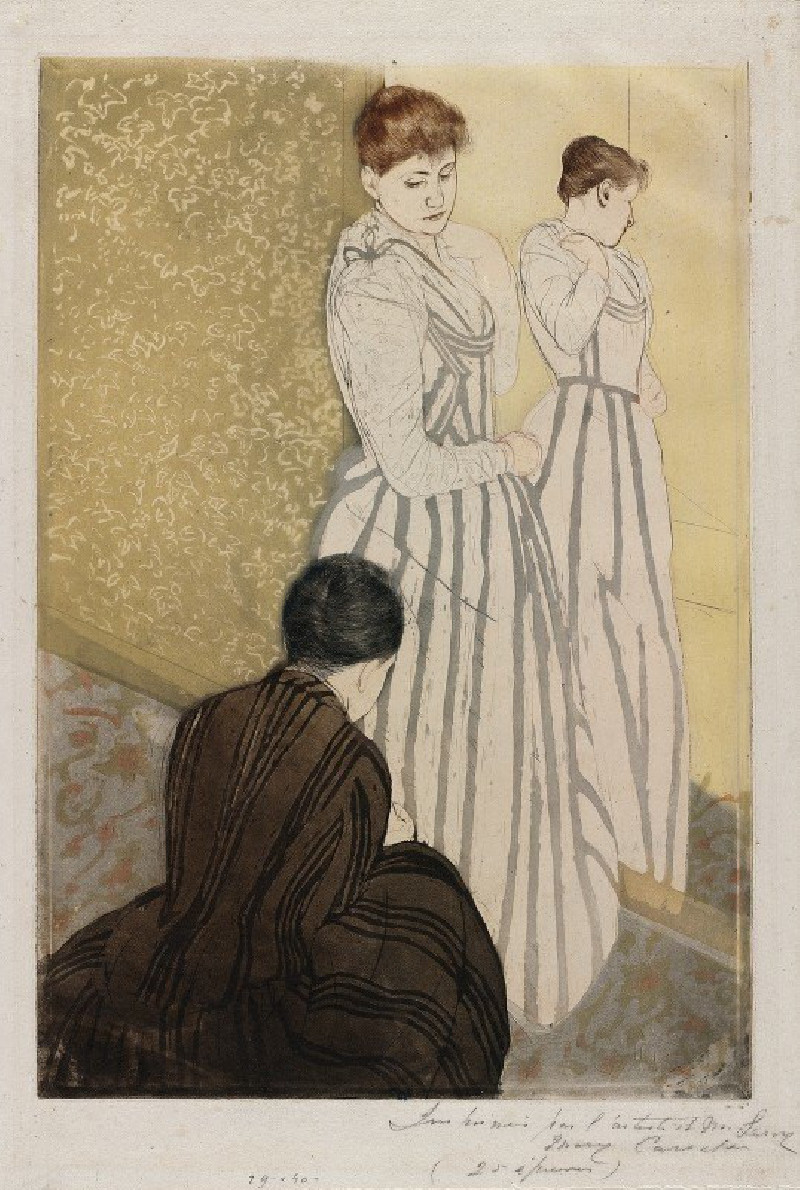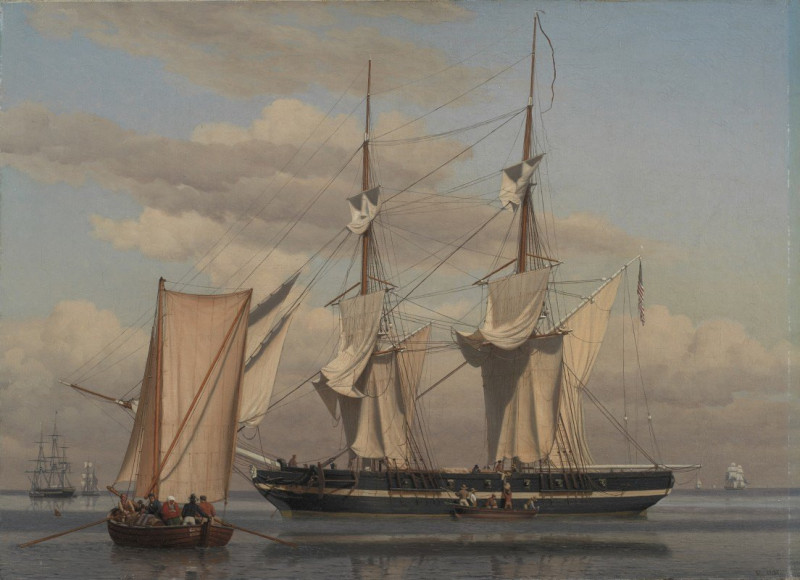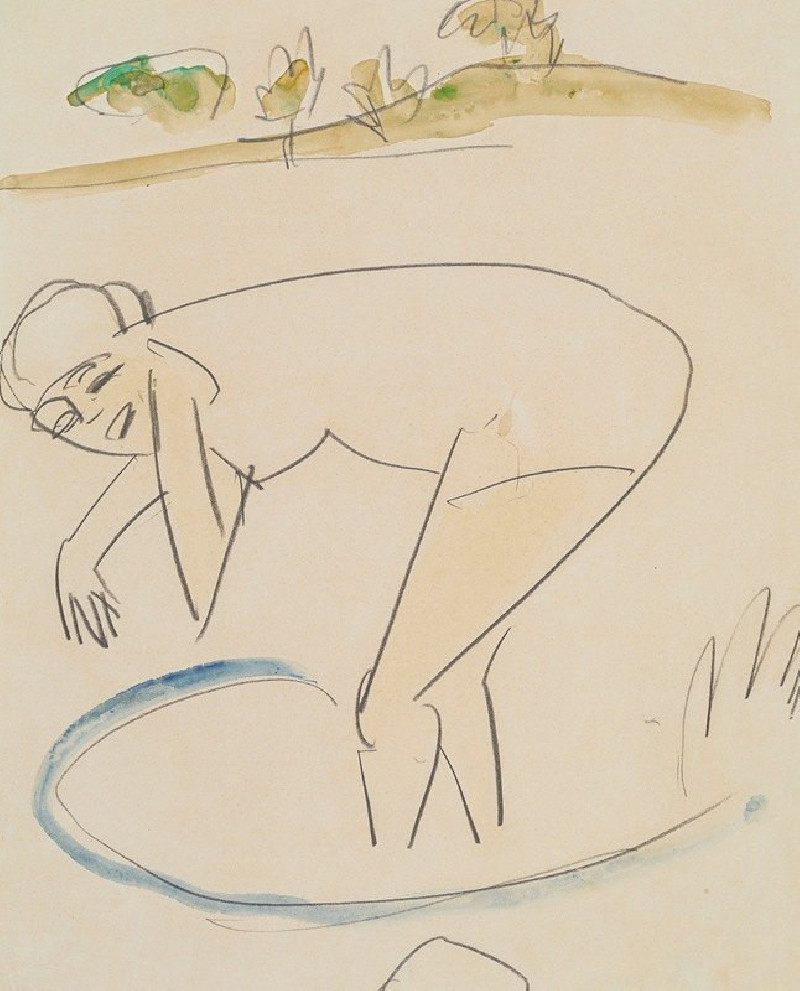Der Verkauf des Schattens (1915)
Technique: Giclée quality print
Recommended by our customers
More about this artwork
We are proud to feature Ernst Ludwig Kirchner's compelling work, "Der Verkauf des Schattens" (The Sale of the Shadow) from 1915. This remarkable painting showcases Kirchner's distinct style, characterized by bold colors and dynamic, angular forms.In this woodcut print, the viewer encounters a dramatic scene likely inspired by myth or folklore. The focal point is a striking figure, cloaked in vibrant blue, which immediately draws the eye. This central character seems to be in motion, perhaps dancing or contorting, amid a lush, darkly inked background. Surrounding this figure are abstracted forms that suggest a group of onlookers, some of which are shaded in a contrasting stark white against the deep background, possibly indicating their ghostly or ephemeral nature. Notably, a figure with a red umbrella adds a distinct splash of color and mystery to the composition.Kirchner’s use of non-naturalistic colors and stark contrasts not only highlights the emotional depth of the scene but also enhances the narrative quality of the depiction. This painting invites viewers into a mystical, intense world, asking them to unravel the story behind the "sale of the shadow" and the nature of the mysterious central figure."Der Verkauf des Schattens" is a fine example of Kirchner’s expertise in using the woodcut technique to create expressive and emotionally charged compositions.
Delivery
Returns
Ernst Ludwig Kirchner (1880–1938) was one of the most important German Expressionist painters. He was a co-founder of Die Brücke, a group of German expressionist artists formed in Dresden in 1905. Die Brücke and Kirchner took inspiration from Vincent Van Gogh and Edvard Munch, as well as African and Oceanic art. They used woodblock printing as a medium to showcase their signature style: flat, unrealistic images with vivid colors. The recurring themes in Kirchner's artworks included exotic cultures, faraway landscapes, self-portraits, dancers and Berlin street life. His paintings and prints effectively portrayed non-European cultures despite the fact that he never traveled outside of Europe.
































